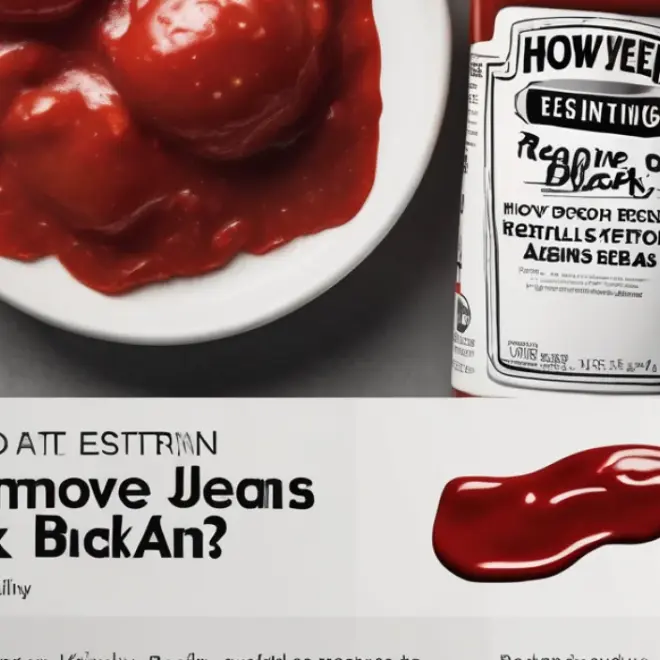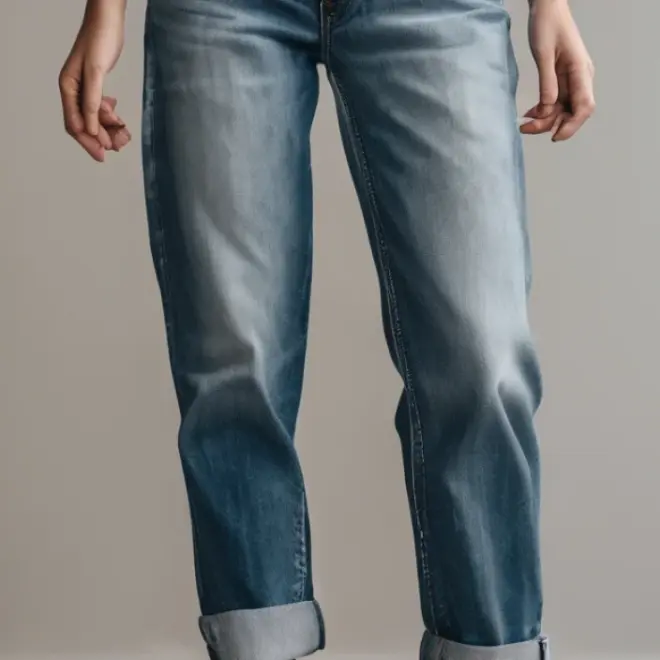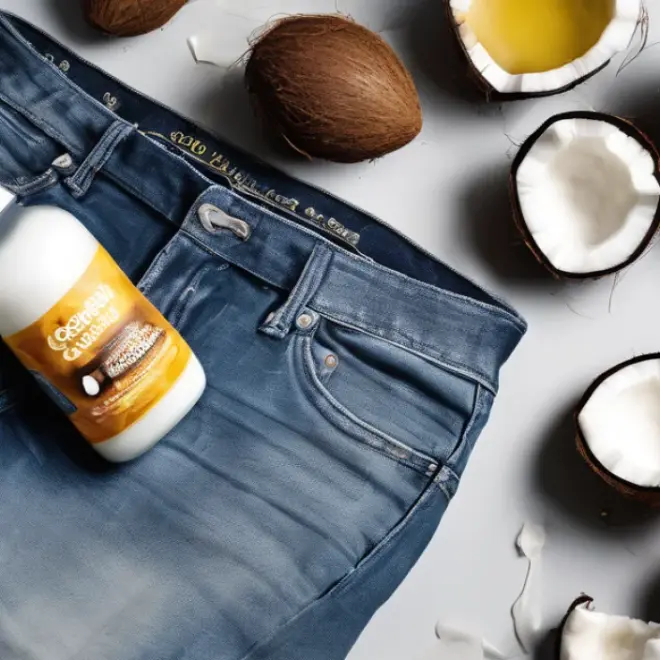Quick Summary: Easily remove soy sauce stains from white jeans using a simple three-step process: blot immediately, pre-treat with a stain remover, and wash as usual. Act fast to prevent the stain from setting, ensuring your white denim stays bright.
How To Remove Soy Sauce: Essential White Jeans Hack
White jeans are a style staple, but a single, inevitable soy sauce spill can turn your favorite pair into a stained mess. Don’t panic! That dark, liquid stain doesn’t have to be the end of your beloved white denim. With the right approach and a little quick action, you can often rescue your jeans and keep them looking crisp and clean.
This guide is designed to walk you through the most effective methods for tackling soy sauce stains on white jeans. We’ll cover what to do immediately, how to pre-treat common and stubborn stains, and the best washing techniques to get your jeans back to their pristine condition. You’ll learn simple, practical steps that anyone can follow, even if you’ve never tackled a tough stain before. Let’s get those white jeans looking like new again!
Why Soy Sauce is Tricky on White Jeans

Soy sauce is notorious for its deep, dark color, thanks to ingredients like soybeans, wheat, and salt, along with caramel coloring that gives it its rich hue. When it lands on white fabric, those pigments penetrate the fibers quickly. The salt content can also sometimes help the stain set in deeper if not treated properly. Because white fabric offers no camouflage, any stain is immediately obvious. The key to success is speed and the right cleaning agents.
Immediate Action: The First 60 Seconds Count
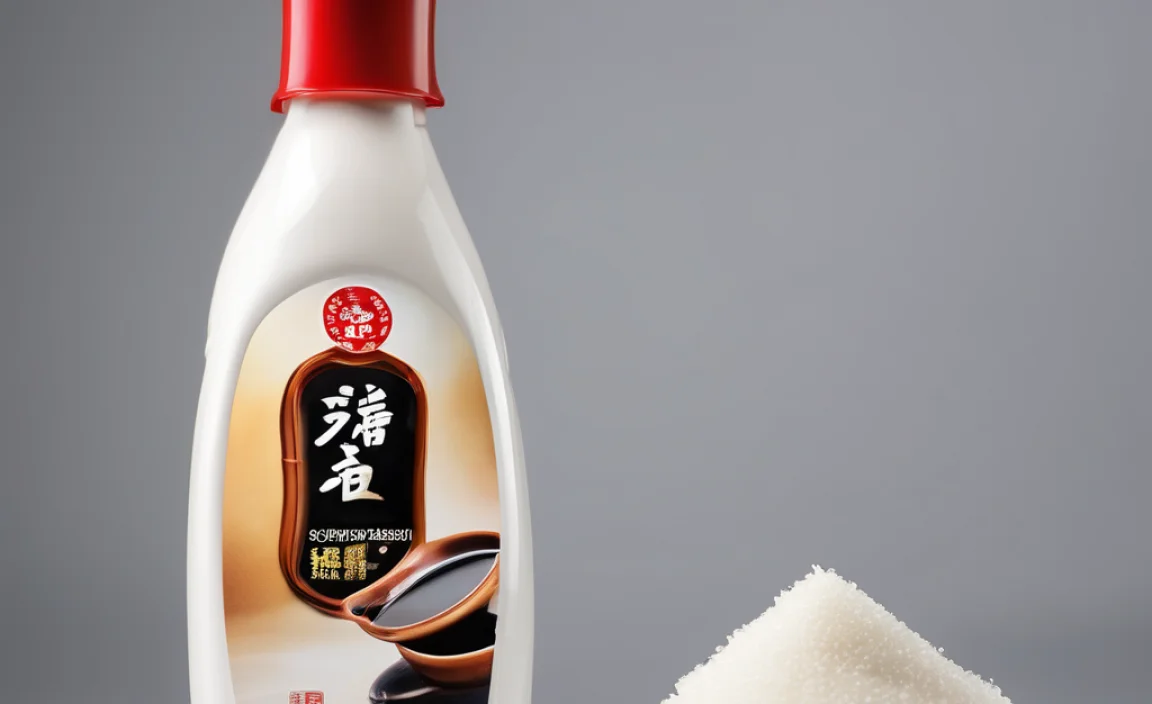
The moment you notice a soy sauce spill on your white jeans, it’s time to act. The fresher the stain, the easier it is to remove. Hesitation can allow the stain to bond with the fabric fibers, making it much harder to lift later.
Step 1: Blot, Don’t Rub
The very first thing you should do is grab a clean, dry cloth or paper towel. Gently blot the stained area. The goal here is to absorb as much of the excess soy sauce as possible without spreading it further. Avoid rubbing vigorously, as this can push the stain deeper into the fabric and make a larger mess. Think of it like dabbing a wound; you want to lift, not grind.
Step 2: Rinse with Cold Water (If Possible)
If you’re near a sink or can access water, rinse the back of the stained area with cold water. This helps to push the stain out of the fibers from the reverse side, preventing it from setting too deeply. Again, use cold water, as hot water can sometimes set protein-based stains, and while soy sauce isn’t primarily protein, cold water is always the safest bet for fresh stains on delicate fabrics.
Essential Tools for Stain Removal
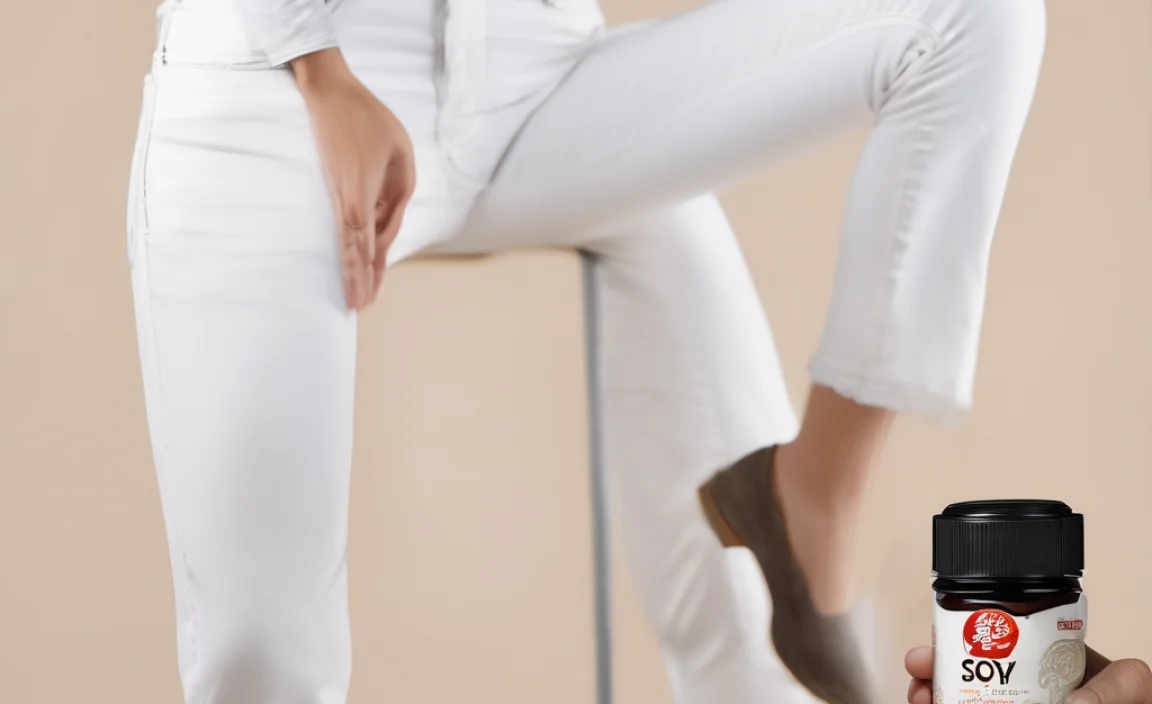
Before you start treating the stain, make sure you have these items handy. Having them ready means you can react quickly when a spill happens.
- Clean, absorbent cloths or paper towels
- Cold water
- Liquid laundry detergent or a dedicated laundry stain remover
- An old toothbrush or soft-bristled brush
- Oxygen bleach (optional, for tougher stains)
- White vinegar (optional, for stubborn residue)
- Dish soap (a surprisingly effective degreaser for some stains)
Pre-Treatment: Tackling the Stain Head-On
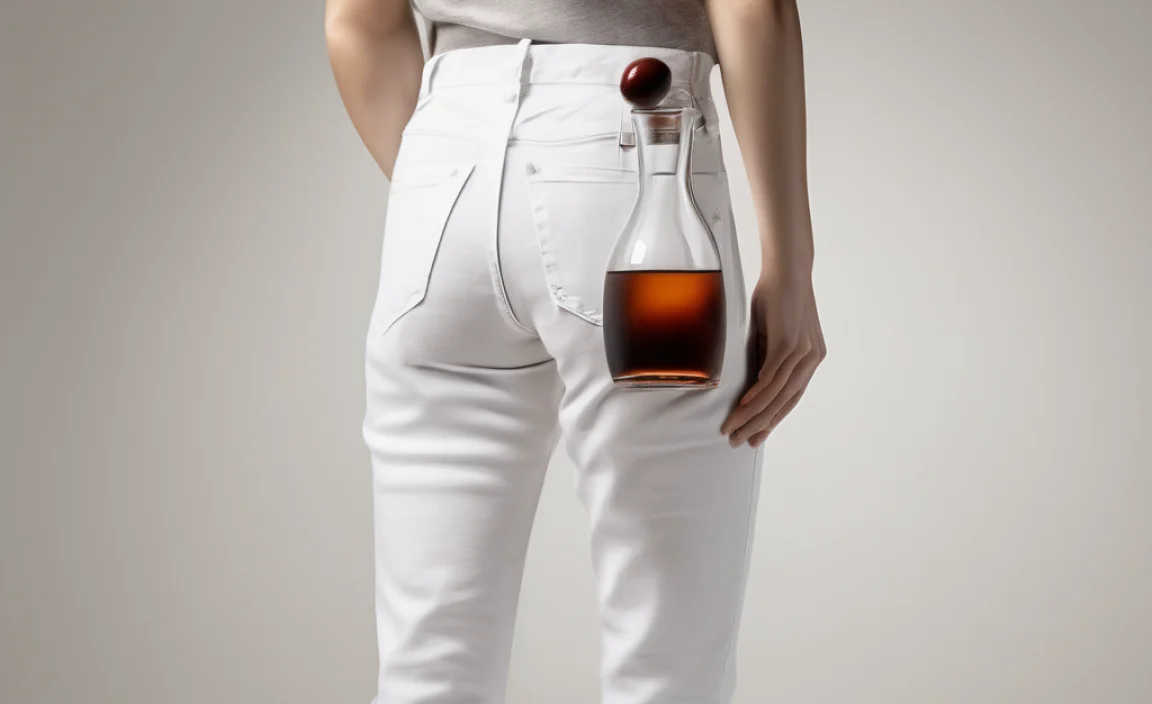
Once you’ve blotted and rinsed (if possible), it’s time for targeted treatment. The longer the stain has been there, the more robust your pre-treatment needs to be.
Method 1: Liquid Laundry Detergent or Stain Remover
This is your go-to method. Apply a generous amount of liquid laundry detergent (one with stain-fighting enzymes works best) or a commercial laundry stain remover directly to the stained area. Gently rub the detergent into the fabric with your fingers or a soft-bristled brush. Let it sit for at least 5-10 minutes (or longer, according to the stain remover’s instructions), allowing the enzymes and cleaning agents to break down the soy sauce pigments.
Method 2: Dish Soap (for Grease/Oil)
Soy sauce can sometimes contain oils that make it resemble a grease stain. If you suspect oil is involved, a drop or two of good quality dish soap (like Dawn) can be very effective. Apply it directly to the stain, work it in gently, let it sit for a few minutes, and then proceed with rinsing.
Method 3: Oxygen Bleach Paste (for Stubborn Stains)
For stains that are proving difficult, an oxygen bleach paste can be a lifesaver. Mix a tablespoon or two of powdered oxygen bleach (like OxiClean) with just enough warm water to form a paste. Apply this paste to the stain, making sure it’s fully covered. Let it sit for 30 minutes to a few hours, depending on the stain’s severity. You can test oxygen bleach on an inconspicuous area of your jeans first to ensure it doesn’t affect the color of white dye, though typically it’s safe for whites.
Method 4: White Vinegar Solution
White vinegar is a mild acid that can help break down stains. Mix equal parts white vinegar and water. Apply this solution to the stain and let it sit for about 10-15 minutes before rinsing and proceeding with laundry detergent. This can also help neutralize any lingering odors.
The Washing Process: Getting Whites Truly White

After pre-treating, it’s time to wash your jeans. The washing method is crucial for ensuring the stain is gone and your white jeans remain as bright as possible.
Step 3: Wash on the Hottest Setting (Safe for Fabric)
Check the care label on your white jeans. Wash them in the washing machine on the hottest water temperature recommended for the fabric. For most cotton denim, this will be a warm or hot cycle. Use your regular laundry detergent. If you used an oxygen bleach paste, rinse the jeans thoroughly before placing them in the washing machine to remove any residue.
Adding an Extra Boost
For particularly dingy whites or to enhance stain removal, you can add a scoop of oxygen bleach directly to the washing machine drum along with your detergent. This provides an extra cleaning punch without the harshness of chlorine bleach.
Drying: The Final Check
This is a critical step often overlooked when dealing with stains. Do not put your jeans in the dryer until you are absolutely sure the stain is gone. The heat from the dryer can permanently set any remaining stain, making it nearly impossible to remove later. After the wash cycle, inspect the stained area carefully in good light. If the stain is still visible, repeat the pre-treatment and washing steps before drying.
Once you’re confident the stain is gone, you can dry your white jeans as you normally would, either in the dryer on a medium heat setting or by air-drying them to preserve the fabric and minimize shrinkage.
Table: Stain Removal Methods Compared
Here’s a quick look at the effectiveness of each pre-treatment method:
| Method | Best For | Pros | Cons | Ease of Use (Beginner) |
|---|---|---|---|---|
| Liquid Detergent/Stain Remover | Fresh and moderately set stains | Widely available, effective, enzyme-based options break down many stains | May not work on very old or deep stains | Very Easy |
| Dish Soap | Soy sauce with oily components | Excellent degreaser, readily available | Might leave a slight residue if not rinsed well | Easy |
| Oxygen Bleach Paste | Stubborn or set-in stains | Powerful stain fighter, color-safe for whites | Requires mixing, longer waiting time, test on a hidden spot | Moderate |
| White Vinegar Solution | Lingering discoloration and mild stains | Natural deodorizer, mild acid helps break down some stains | Can have a strong odor temporarily, less effective on deep stains | Easy |
What Not to Do: Common Mistakes to Avoid
When tackling soy sauce on white jeans, a few common mistakes can hinder your efforts and even make the stain worse. Being aware of these pitfalls can save your jeans.
- Rubbing the Stain: As mentioned, rubbing pushes the stain deeper and spreads it. Always blot.
- Using Hot Water Initially: While hot water is good for washing, using it to treat a fresh stain can sometimes set it, especially if there are protein components involved. Start with cold.
- Drying Before the Stain is Gone: This is the biggest mistake. Heat from the dryer is the enemy of a fresh stain. Always check, and re-treat if necessary, before drying.
- Using Chlorine Bleach Indiscriminately: While effective on whites, chlorine bleach can weaken fabric fibers over time and may react poorly with certain fabrics or other cleaning agents, leading to yellowing or damage. Oxygen bleach is generally a safer bet for regular use.
- Ignoring the Care Label: Always check your garment’s care label for specific washing and drying instructions. Some fabrics or finishes may require special care.
For Tougher, Set-In Stains
If you’ve discovered an old soy sauce stain, don’t toss the jeans just yet. Set-in stains require a more persistent approach. Try one of these strategies:
- Soaking: Mix a solution of oxygen bleach and cool water according to the product’s instructions. Submerge the stained jeans and let them soak for several hours, or even overnight. Check periodically.
- Enzyme-Based Stain Removers: Look for stain removers specifically formulated with enzymes designed to break down protein and organic stains. These can be very effective on older, set-in stains. Apply liberally, let it dwell as directed, and then wash.
- Repeat Treatments: Sometimes, particularly stubborn stains require multiple rounds of pre-treatment and washing. Be patient and consistent. For more information on stain removal science, consult resources like [University of Illinois Extension], which offers expert advice on laundry care and stain treatment.
When to Call in the Professionals (or Consider Them Gone)
While most soy sauce stains on white jeans can be managed with home remedies, there are a few situations where professional help might be considered, or it might be time to accept the stain as part of the garment’s story.
If the stain has been there for weeks or months and has gone through multiple hot washes and dryer cycles, the dye molecules may have permanently bonded to the fabric fibers at a molecular level. In such cases, even professional dry cleaning might not be able to fully extract it. Additionally, if the fabric is very delicate (like a thin linen blend) or has a special finish, aggressive stain removal could damage it.
For everyday denim, however, persistence is usually key. If one method doesn’t fully work, try another, or simply repeat your chosen method. Sometimes, it takes a combination of treatments.
Frequently Asked Questions (FAQ)
Q1: How quickly do I need to treat a soy sauce stain on white jeans?
A: The sooner, the better! Ideally, treat it within minutes of the spill. Fresh stains are significantly easier to remove than old, set-in ones.
Q2: Can I use chlorine bleach on soy sauce stains on white jeans?
A: You can, but carefully. Chlorine bleach can weaken fabric fibers over time and may cause yellowing on some materials. Oxygen bleach is generally a safer and more effective alternative for most white fabrics and is less likely to damage the material.
Q3: What if the stain is still there after washing?
A: Do not put the jeans in the dryer! Heat will set the stain permanently. Instead, repeat the pre-treatment steps with a stronger method or for a longer duration, and then wash again. Air-drying is best while you’re still treating a stain.
Q4: Will dish soap really work on soy sauce?
A: Yes, especially if the soy sauce has an oily component. Dish soap is an excellent degreaser and can help break down the fats and oils that might be trapping the dark pigment, making it easier for detergent to lift the stain.
Q5: How do I prevent future soy sauce stains on white jeans?
A: Be mindful when eating foods with soy sauce, especially in your white jeans. Consider wearing an apron or darker clothing for meals where spills are more likely. For very light-colored clothing, keeping a small, portable stain remover pen in your bag can be a lifesaver for immediate action on minor mishaps.
Q6: My white jeans have a faint yellowing around the stain area after treatment. What happened?
A: This can sometimes happen if you’ve used chlorine bleach, or if the stain treatment interacted with the laundry detergent in a specific way. Ensure you rinse thoroughly after pre-treatment. Washing with an oxygen bleach and using a good quality detergent should help restore brightness. For persistent yellowing, a laundry bluing agent might help counteract it.
Conclusion: Keeping Your Whites Pristine
Soy sauce spills on white jeans can feel like a fashion emergency, but with this practical guide, you’re well-equipped to handle them. The key takeaways are speed, gentle blotting, effective pre-treatment with the right agents, and cautious drying. By acting swiftly and following these steps, you can significantly increase your chances of completely removing the stain and keeping your white jeans looking fresh and stylish for seasons to come. Remember, a little knowledge and the right tools can save your favorite garments from a world of stain-related worry. So, embrace those white jeans with confidence, knowing you have a reliable hack for those inevitable little spills.




